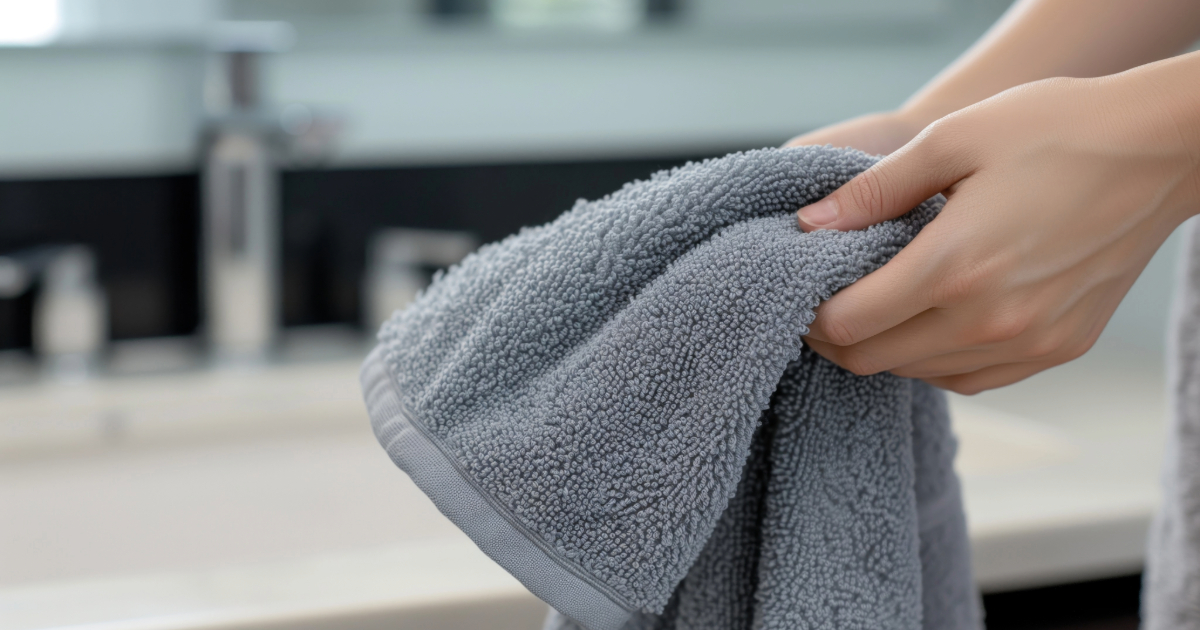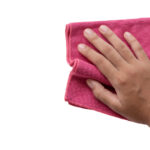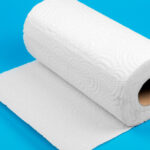Microfiber towels have become increasingly popular in recent years due to their ability to dry faster than regular cotton towels.

But how much faster do they actually dry, and why is that?
How Microfiber Towels Are Constructed
Microfiber towels are made of extremely fine synthetic fibers that are tightly woven together. The fibers are much finer than cotton fibers in regular towels, generally 1/100th the thickness of a human hair.
This tight construction with fine fibers allows microfiber towels to have some key advantages:
- Higher surface area – The more tightly packed fibers means there is more surface area for water to contact and absorb into. More surface area means faster drying.
- Low water absorbency – The synthetic fibers are hydrophobic, meaning they do not readily absorb water. So microfiber towels can soak up water through capillary action between the fibers without retaining it within the fibers.
- Thin fabric – With tightly packed fine fibers, microfiber towel fabric is very thin, with high surface area relative to its mass. This also contributes to fast drying.
The fine synthetic fibers allow microfiber towels to soak up a lot of water efficiently while retaining little of it internally, leading to fast evaporation from the high surface area.
How Fast Do Microfiber Towels Dry Compared to Cotton?
Tests have found that microfiber towels can dry in 30-50% of the time of a regular cotton towel. For example:
- A standard cotton bath towel may take 7-8 hours to fully dry indoors. A microfiber towel would dry in 3-4 hours.
- A cotton towel hung in the sun may dry fully in 1-2 hours. The microfiber towel would need only 30-60 minutes.
So you can expect your microfiber towel to dry twice as fast as cotton indoors, or in half the time if hung in ideal conditions like direct sunlight.
Key Takeaway: Microfiber dries 30-50% faster than cotton towels in most conditions.
Indoor Versus Outdoor Drying Times
As the tests show, drying times are hugely impacted by whether indoors or outdoors. Some key differences:
Indoors
- Slower air circulation leading to slower evaporation
- Ambient room temperature, no direct warming from sunlight
- May hang askew or bunched up rather than spread out
Typical indoor drying for a medium-sized microfiber towel could be 3 to 5 hours if fully spread out in an airy room.
Outdoors
- Direct sunlight rapidly heats the fibers to drive water evaporation
- Better airflow spreads evaporating moisture rather than saturating air pockets
- Can be hung fully spread out and in direct sun
In ideal sunny and breezy conditions, drying time for a medium microfiber towel could be as little as 30 minutes. Even in shade but with good airflow, under 2 hours is common.
So drying microfiber towels outside cuts time dramatically compared to indoor drying. Even occasional quick outdoor drying makes a big difference for reuse frequency.
| Condition | Approx. Dry Time – Microfiber Towel |
|---|---|
| Indoors | 3-5 hours |
| Outdoors – Shaded | <2 hours |
| Outdoors – Sunny | 0.5 hours |
Microfiber or Cotton – Which is Best?
Microfiber and cotton both have pros and cons:
Microfiber
Pros
- Dries very quickly
- Highly portable and packable
- Lightweight to carry
- Doesn’t retain odors
Cons
- Less luxurious texture
- Pilling over time with wear
- Not as inherently antibacterial as cotton
Cotton
Pros
- Softer, more plush texture
- Natural material, biodegradable
- Better inherent odor resistance
Cons
- Heavy, bulky, takes up more space
- Stays damp longer, harbor odors
- Dries slowly, requires more cleaning
Microfiber is best when fast drying and portability are top priorities like for travel, camping, and sports. Cotton is optimal when you prioritize comfort and have ample space and drying time.
Key Takeaway: Choose microfiber towels for fast drying and compactness. Cotton offers a softer texture and biodegradability.
Caring For Your Microfiber Towels
To get optimal life from your microfiber towels:
- Wash with gentle/delicate detergent, avoid fragrance & fabric softeners
- Machine wash cold, tumble dry low
You can wash microfiber more frequently than cotton. But chlorine and abrasive surfaces speed up wear, so rinse off after pool use rather than leaving damp.
Conclusion
Microfiber towels offer unmatched drying speed – often fully drying in 30-50% the time of cotton depending on conditions. Their finely woven, lightweight construction drives rapid evaporation.
Outdoor drying slashes dry times for microfiber to as little as 30 minutes in sun. But indoor drying still benefits from their moisture-wicking performance over standard cotton towels.
So for travelers, athletes, and anyone who needs a highly portable towel that dries fast, microfiber is a game-changing choice over traditional cotton.
But cotton still has benefits like sustainability and soft feel that suit low-use bathroom or decorative roles. Ultimately microfiber works best when quick dry performance is paramount and space is limited.








